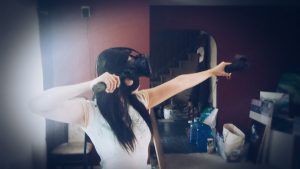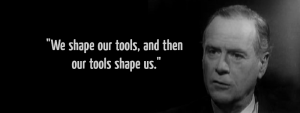Artificial Intelligence (AI) is typically divided into Artificial Narrow Intelligence (ANI) and Artificial General Intelligence (AGI). ANI deals with machines or robots that can perform a task or function such as welding on a manufacturing assembly line. These robots/machines are designed to perform one task and are not able to adapt to other tasks unless they are programmed specifically. Conversely, AGI deals with computers that are able to perform different levels of human intelligence, such as perceiving, reasoning, problem solving, and interacting in the context with some creativity. Additionally, AGI computers can make decisions to move information between databases. Presently, much of thinking behind AGI involves future projections based on theory and some recent innovations in deep learning, one of the main Canadian focuses in AI research. In this blog, we want to focus on ANI and its implications for jobs going forward.
The influence of ANI has already been felt in the workplace. For example, during the recessions of the 1980s and 1990s, the manufacturing industry replaced many line workers with robots. Today, there are computer programs with the abilities to do word processing, perform translations, and numerous smart phone Apps that execute many functions via the internet. These innovations are already impacting the way information is accessed and business is transacted. Predictions are that narrow intelligence will eliminate jobs that require repetitive manual labour, and jobs characterized by standardized tasks. For example, some have forecasted that as many as 42% of all jobs in Canada are in danger of being automated. The degree to which these jobs can be automated will influence their availability in the workplace.
However, due to innovations, new jobs have been and will be created. For example, there are 845 jobs listed under the AI title on LinkedIn Canada’s website, including engineers, technologists and technicians with specific specialities in AI. Due to the structural unemployment created, workers will need to either quickly reskill in AI competencies or transition to other jobs in the workplace. Workers who seek AI jobs will need to acquire new hard skills: problem-solving and analytical thinking skills; skills that enable them to build, maintain and repair software programs and machines; and, the ability to look for technological innovations that enable businesses to remain competitive. Additionally, they need soft skills, such as competent languages skills to explain technical information, and empathy to understand the stress others experience due to work transitions.
It seems quite certain that the number of jobs characterized by repetitive tasks and requiring low cognitive skills will continue to decrease. This decrease has several implications. Career counsellors will need to understand the scope of AI educational programs, their availability and entrance requirements. Further, counsellors will need labor market information to benefit their clients. For example, individuals, aspiring to jobs in AI and those already in the workforce will need to have had formative education in STEM subjects (Science, Technology, Engineering, Mathematics) or acquire it to complete technician and technology programs in computer design, operations, and maintenance. Those currently in school will need to master STEM courses if they intend to choose educational paths leading to careers in AI. AI specialists in the workforce will need to upgrade continually to keep up with innovations in their field. And, employers will need to develop policies that enable workers to take educational leaves regularly to master changes issuing from technological innovations.
Jeff Landine and John Stewart
Faculty of Education, University of New Brunswick, Fredericton, N.B.
Suggested Readings
Retrieved on March 20, at: www.cifar.ca.
Retrieved on March 20, at: www.cifar.ca/ai/”pan-canadian-artificial-intelligence-strategy.”
Retrieved March 20, at: www.+RG-“CPA-Introduction-to-AI-What-You-Need-to-Know”-February-2019.pd.
Retrieved March 20, at: sencanada.ca/content/sen/committee/421/SOCI/reports/”RoboticsAI3D”Final_Web_e.pdf.
Retrieved on March 20, at: www.weforum.org/agenda/2018/09/”4-ways-ai-artificial-intelligence-impact-financial-job-market.”
*The views expressed by our authors are personal opinions and do not necessarily reflect the views of the CCPA





